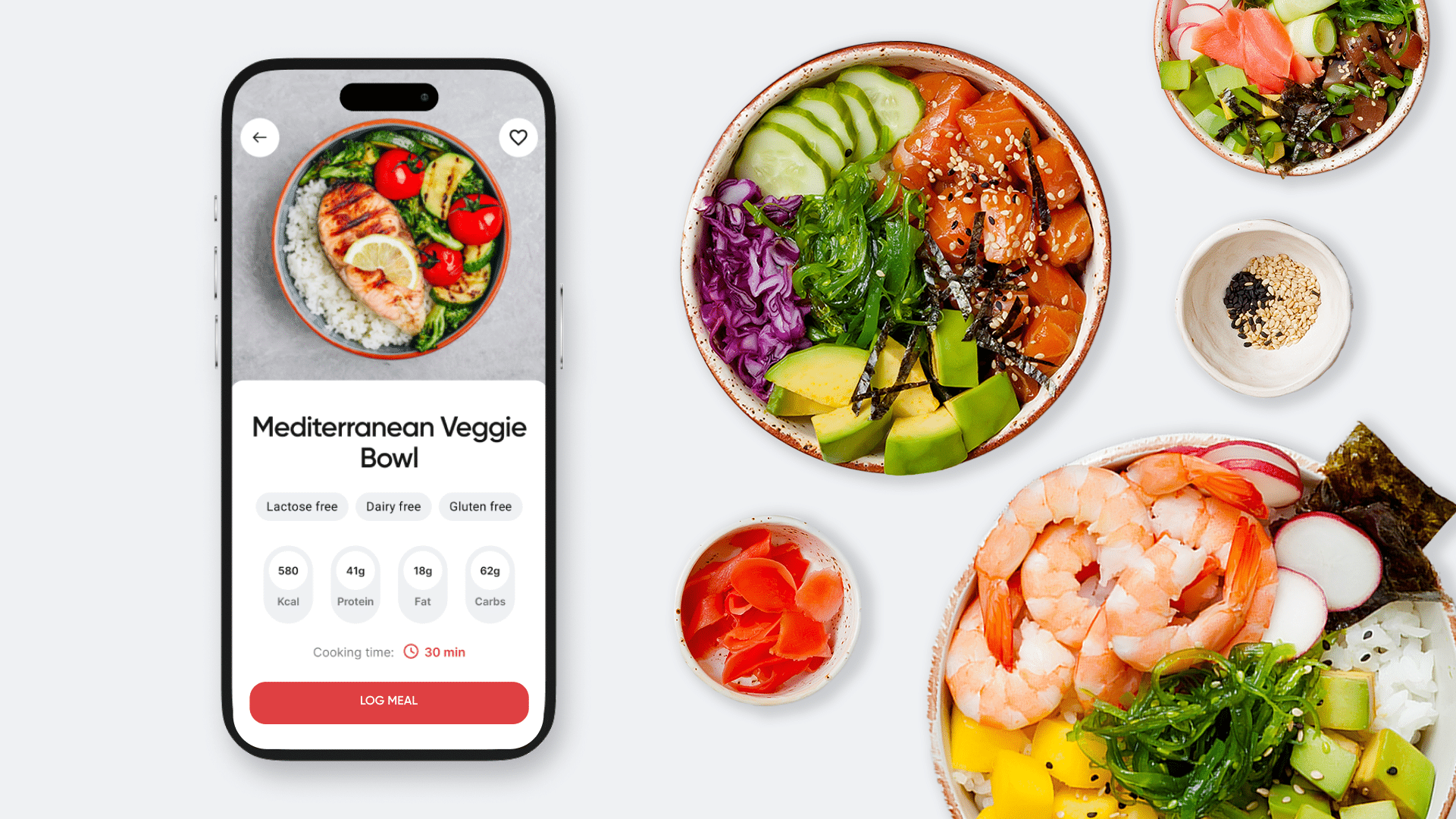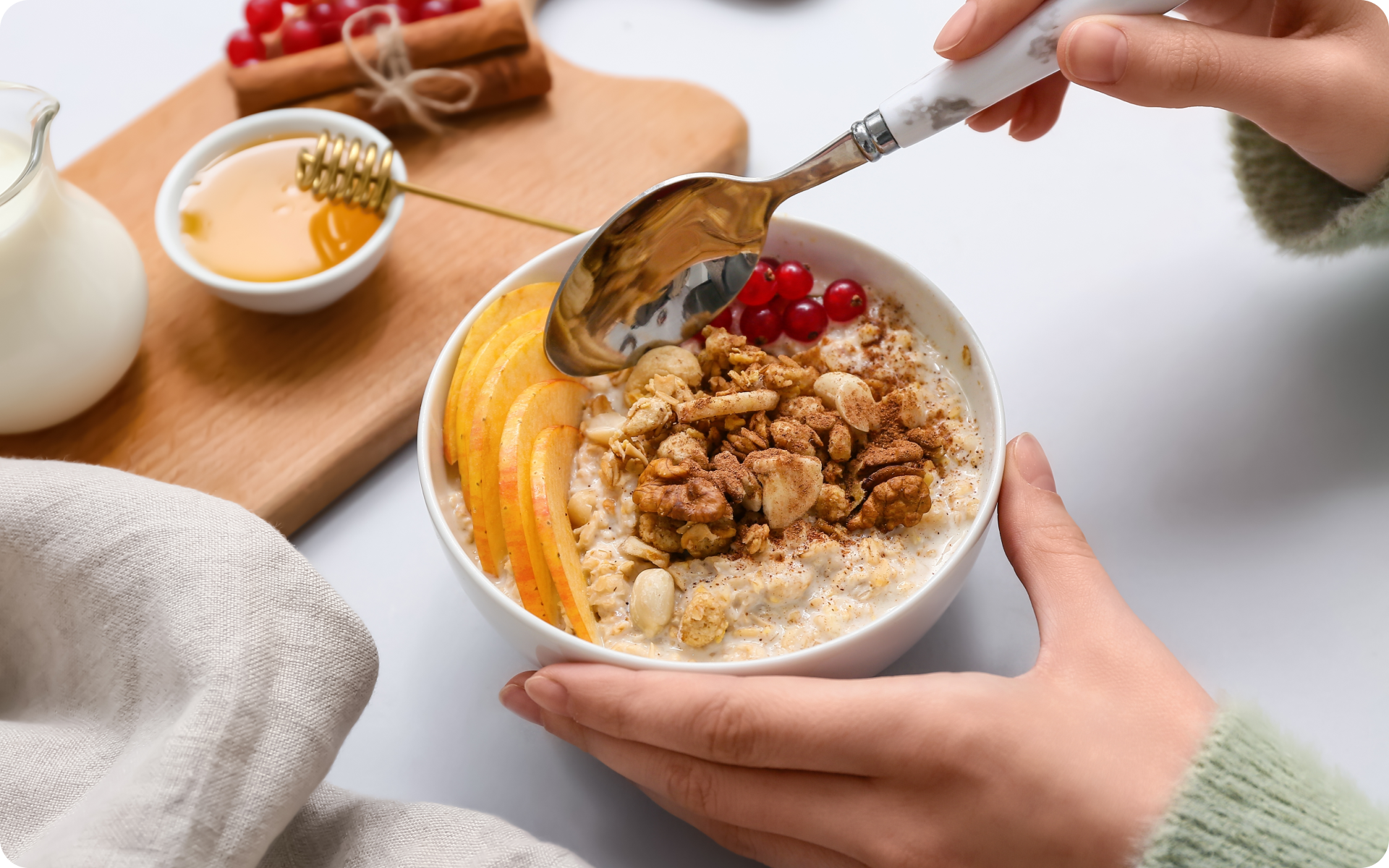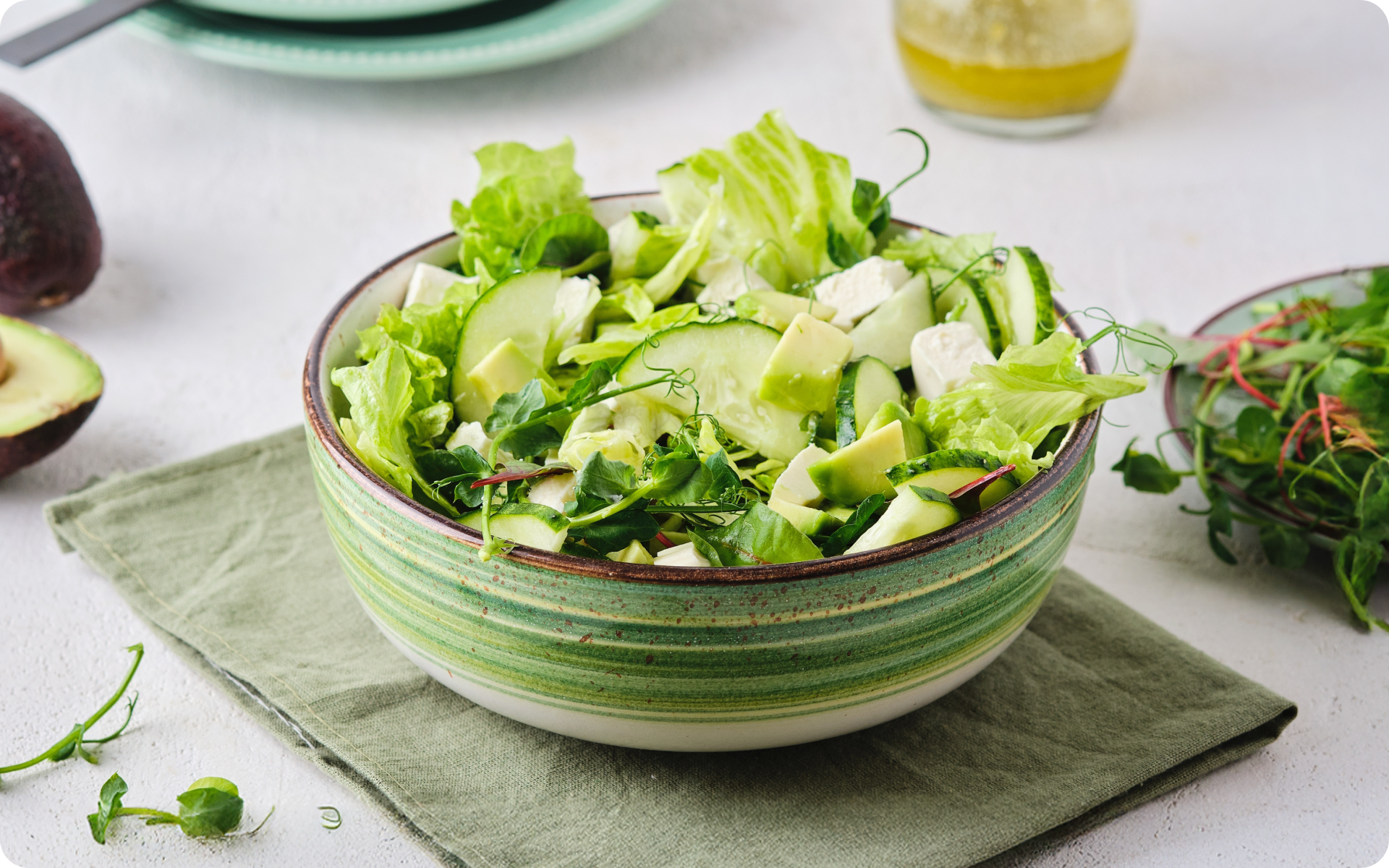Protein shakes typically contain a mixture of water, milk, and powder together with vitamins and minerals. All of them are designed to provide high-quality protein, which can promote muscle growth and boost metabolism. These beverages have long been used by bodybuilders after they exercise and fitness enthusiasts during competitions to build lean muscle mass.
Recently, more people have started to opt for a protein shake diet. This is due to the perception that this type of meal replacement can lead to rapid weight loss, which allows people to achieve their desired figure within a short period. But what are the facts behind these claims? Is it true or is it just another fad diet that only offers short-term results?
How Does the Protein Shake Diet Work?
A typical protein shake diet consists of a high-protein and low-calorie diet, using these shakes as meal replacements. You replace two or three meals per day by drinking one of these shakes that are purported to be both filling and nutritious (15).
A standard protein shake diet meal plan may look like this:
- Breakfast – protein shake (200-300 calories)
- Snack – a high-protein food under 100 calories (e.g., 6 oz of Greek yogurt)
- Lunch – protein shake (200-300 calories)
- Snack – 1/2 cup blueberries
- Dinner – one balanced meal of your choice (400-500 calories)
When you’re on a 7-day protein shake diet, you repeat this eating pattern for each day. Your dinner meals should be high-protein and low-calorie.
The idea behind this method is that you consume fewer calories, which means that your body will have less fuel for energy, so it must break down stored fat instead. Furthermore, those who go on this diet believe that protein suppresses hunger.
This then helps maintain a reduction in calorie intake, allowing people on such diets to feel more satisfied after consuming limited calories, thereby making them eat less overall.
Protein has many benefits for health and weight loss (17). The 7-day protein shake diet may show some weight loss as it reduces calorie consumption and creates a deficit. However, to maintain these results, you’ll need to stick to a reduced-calorie diet for much longer than a week.
BetterMe is your fast-track ticket to a long-lasting weight loss! Tailor your fitness journey and maximize your results with just a couple of swipes!
Downsides of the Protein Shake Diet
While following a shake diet program for a short period, such as five days or a week, probably won’t cause any harm to most healthy adults, it may not be the most effective weight-loss method because you’ll lack vital nutrients, and the results are short-lived.
Protein Shakes Don’t Offer Sufficient Nutrients
Although these beverages are rich in protein, they don’t offer much else (15). You won’t get much in terms of essential vitamins and minerals, complex carbohydrates, healthy fats, and other nutrients, so you may feel tired or have other health issues that are related to nutrient deficiencies if you follow this diet for too long.
These drinks may also lack fiber, which is important for good digestive function and regular bowel movements. Fiber can also slow down the absorption of sugar, so it will help keep your blood sugar levels stable.
Results Will Be Short-Lived
The protein shake diet is incredibly restrictive. It limits your intake of wholesome foods, and for most people, this may not be sustainable in the long term.
This means that if you go on a protein shake diet and then return to your normal eating habits, your weight will quickly go back up again. Another reason why this diet is not effective is that when you drastically cut calories, the initial pounds lost are mostly water, so the loss is temporary and the water weight will come back as soon as you start to eat regular meals again.
Benefits of Protein Powder Weight Loss
When combined with an appropriate exercise regime and as part of a balanced diet, protein shakes can help you lose weight and belly fat via several different mechanisms:
Digesting Protein Burns More Calories
Your body burns calories during digestion and protein is the most thermogenic macronutrient. This means that you burn more calories digesting and absorbing protein than you do with any other macronutrient.
The thermic effect of food (TEF) refers to how much energy your body uses when digesting different types of foods. Proteins have the highest TEF at 15-30%, much higher than carbs and fats (16). This means that 15-30% of the calories in the protein go toward digesting that protein (5).
Replacing some of your carbs and/or fat with protein can help burn a few extra calories and if you don’t increase your calorie intake to make up for it, this can contribute to your calorie deficit and promote weight loss.
Protein Boosts Metabolism
Consuming high amounts of protein stimulates your body’s metabolism (8). Protein increases the thermic effect of feeding, which stimulates slightly increased calorie burn during digestion and absorption (16).
Protein also helps you build muscle(7). Muscle is metabolically active tissue that also burns calories around the clock, even when you’re not working out. So if you’re trying to lose weight, it can be particularly beneficial as more muscle requires more energy (calories) to maintain itself (9).
If you have more lean muscle mass, this means a higher metabolic rate, so by increasing your intake of protein-rich foods and doing strength training exercises, your body composition will change over time in favor of lean muscles rather than excess body fat.
Protein Reduces Appetite
Protein also helps with appetite control by taking longer to digest, and, therefore, it makes you feel full for longer after eating. It may also stimulate the release of signaling peptides, which tell the brain that you are full. Studies have suggested that people who consume higher amounts of protein are less likely to overeat or continue to eat after satiety signals from their stomach that they’re full have been triggered (14).
Lowering your appetite is essential as it enables you to lose weight without struggling with hunger pangs all day long.
Protein Prevents Loss of Lean Muscle During Weight Loss
Once you start to burn more calories with exercise and cut back on your calorie intake (which will inevitably cause muscle loss along with fat loss), eating enough protein becomes essential if you want to maintain lean muscle mass.
Increased consumption of protein has been shown to improve body composition and prevent the loss of lean tissue during periods of weight loss, especially when combined with adequate amounts of resistance training (11).
Read more: 7-Day Weight Loss Low-Carb Diet: Choose High-Protein, High-Fiber, or Ultra-Low-Carb
Alternatives to the 7-Day Protein Shake Diet
Weight loss is all about reducing calorie consumption to create a deficit. Contrary to popular belief, healthy weight loss doesn’t need to be restrictive. Rather than an extreme liquid diet that won’t have lasting results, here are some potentially healthier weight loss options:
Intermittent Fasting
Intermittent fasting promotes weight loss and overall health by limiting the time you’re allowed to eat, which should naturally reduce calorie intake (12).
Unlike extremely restrictive diets, intermittent fasting is flexible enough to become a lifestyle. It doesn’t restrict the foods you eat, so you can eat a healthy, balanced diet without restriction. There are many variations of IF, including 20/4, 18/6, and 16/8, that can help you lose weight without feeling deprived.
Carb Cycling
Carb cycling is a method of weight loss that includes low-carb phases and higher-carb days. This can be helpful for those who want to try a low-carb diet but also want flexibility, whether to support vigorous exercise or for any other reason.
The best way to implement carb cycling is by eating between 50-100 grams of carbohydrates on low-carb days and increasing to 150 grams or more on training days (for example, on Monday, Wednesday, and Friday) (6). Keep your protein intake consistent based on your individual needs. On lower carb days, increase your fat intake slightly as well as non-starchy vegetables such as broccoli, cauliflower, spinach, and kale.
You can include your protein shakes in a carb cycling meal plan. Maintaining an overall high-protein diet will also help promote weight loss through muscle gain and satiety.
Intuitive Eating
Intuitive eating advocates that you listen to your body and eat when you’re hungry (13). Dieters often feel guilty for not sticking to a rigid meal plan, but in reality, it’s better to listen to your body than to try and override its natural instinct. Intuitive eating is also about listening to hunger cues and learning how they relate to emotions such as boredom or stress.
While intuitive eating isn’t necessarily aimed at weight loss, it can help maintain a healthy weight and foster a healthy relationship with food by giving you freedom over your food choices without restricting certain foods or calories.
If you’ve mustered up the courage to crush your weight loss goal, let Betterme take the sting out of this demanding process. Our app will help you restructure your habits, remold your life and crank up your fitness results!
Can You Lose Weight by Just Drinking Protein Shake?
Protein plays an important role in a weight loss journey. It makes you feel fuller for longer, which ultimately cuts down your appetite.
When you consume more protein, you’re less likely to eat too much or keep eating after you’re full. This is important for losing weight as it helps control your appetite and prevents you from feeling hungry all the time.
It should be noted that drinking protein shakes may be a part of your weight loss diet, but you may not hit your desired fitness goals if you only consume the shakes and forgo whole, nutritious foods. If you’re aiming for sustainable weight loss, you should work on your overall dietary patterns and lifestyle. Simply drinking protein shakes without making other changes to your diet and exercise routine is unlikely to help you achieve lasting weight loss.
Protein shakes can be a convenient option for those with busy lifestyles or limited time for meal preparation. They provide a quick and easy way to consume protein, particularly for post-workout recovery.
Protein Shake Recipes
Raspberry Chocolate Smoothie(2)
This decadent-tasting smoothie is loaded with healthy ingredients, including cocoa powder, which provides flavonoids that are both brain and heart-healthy. This smoothie also contains other healthy ingredients such as raspberries, a source of immune-supporting vitamin C, and spinach, a source of iron. You can add a plant-based protein such as sprouted rice or pea protein to help with your post-workout muscle recovery.
Ingredients
- ½ banana
- 1 handful spinach
- ½ cup raspberries
- 1 tablespoon almond or cashew nut butter
- 2 tablespoons raw cocoa powder
- 10 oz unsweetened almond, hemp, or coconut milk
- 1 scoop or serving plant-based protein powder
Instructions
Blend all the ingredients.
Nutrition: 391 calories / 15 g fat / 38 g carbs / 12 g fiber / 12 g sugar / 34 g protein
Peach Oat Cobbler (2)
This peach oat cobbler is a light and airy drink that will leave you feeling full but not heavy. It’s perfect for those who want something sweet without all the guilt. The recipe is chock-full of nutrients including calcium and vitamins A, B5, B6, D, E, and K.
The ingredients are simple: peaches (fresh or frozen), vanilla protein powder, oats, and almond milk. They combine to make a satisfying breakfast or afternoon snack on a cold day. Give this recipe a try if you’re looking for something warm that won’t weigh you down.
Ingredients
- ½ peach
- ½ frozen banana
- 2 tablespoons rolled oats
- ½ cup unsweetened almond milk
- 1 teaspoon ground flaxseed
- 1 scoop vanilla plant-based protein powder
- Water to blend (optional)
Instructions
Blend all the ingredients.
Nutrition: 277 calories / 4 g fat / 33 g carbs / 6 g fiber / 14 g sugar / 28 g protein
Cherry-Vanilla Smoothie (1)
This cherry-vanilla smoothie recipe will help you recover from a tough workout. The cherry juice is said to help relieve post-exercise pain in athletes, while the pomegranate juice is said to accelerate muscle recovery. Blend this smoothie for an easy way to refuel after working out.
Ingredients
- ¾ cup ice
- ¼ cup fresh or frozen pitted tart cherries
- ¼ cup pomegranate juice
- 1 scoop vanilla protein powder
- 1 tbsp chopped walnuts
- 1 small cooked, peeled beet (or raw beet, scrubbed and chopped)
Instructions
Blend all the ingredients.
Nutrition: 233 calories/ 25 g protein/ 20 g carbs/ 2 g fiber/ 6 g fat
Superfood Shake (1)
“Eating the rainbow” is a great rule of thumb for those who want to get the most out of their fruits and vegetables. This superfood shake is full of nutritious berries, beets, and seeds that will boost your nutrient intake while keeping hunger at bay.
Ingredients
- ½ cup frozen cherries
- 8 oz water
- ½ cup chopped raw beets
- ½ cup frozen strawberries
- ½ cup frozen blueberries
- ½ banana
- 1 scoop chocolate whey protein
- 1 tbsp ground flaxseed
Instructions
Blend all the ingredients.
Nutrition: 329 calories/ 28 g protein/ 4 g fat/ 52 g carbs/ 11 g fiber
Read more: 24 Weight Loss Smoothies, 2 Diet Plans, and 5 Belly Fat Smoothie Secrets
FAQs
How much weight can I lose in a week on a shake diet?
The amount of weight you can lose following a protein shake diet depends on factors such as your metabolism, physical activity, and starting weight. Fad diets and diets that are solely reliant on protein shakes may reduce your weight initially, but this will mainly be water weight.
A safer diet plan will help to lose one to two pounds per week, which can be maintained for a long time. Instead of falling for instant weight loss tricks, you should check out the 30-day diet for weight loss.
Will I lose weight if I eat only protein for a week?
Eating only protein for a week isn’t a healthy approach as it doesn’t provide all the nutrients your body needs to stay healthy. Any weight loss is likely to be temporary, and you may experience side effects such as nutrient deficiency, fatigue, or constipation.
It’s important to focus on adopting a balanced eating pattern that covers all the right nutrients, including fruits, vegetables, healthy fats, whole grains, and lean proteins. You should also include regular physical activity in your routine to achieve a healthy weight. A healthcare professional or registered dietitian can guide you regarding a protein-oriented diet plan. Just don’t expect to see results in a week, as a sustainable diet plan takes time to reveal its outcomes.
Does protein burn fat without exercise?
Protein itself doesn’t burn fat. However, if you include an adequate amount of protein in your diet, it can support fat loss in several ways, with or without exercise:
- It increases satiety: It helps you feel full and satisfied after eating. This can reduce your calorie intake during the day, which promotes weight loss (14).
- Preserves lean muscle mass: When the body is in a calorie deficit, it breaks down muscles for energy (11). Consuming protein helps preserve lean muscle mass during weight loss, although exercise is a helpful addition if this is your goal.
- Regulates appetite: Protein may also stimulate the release of signaling peptides, which tell your brain you are full. This can reduce cravings and hunger.
Protein supports weight loss. However, you should remember that your body must be in a calorie deficit for fat loss to occur. Adding protein-rich foods to your diet is a helpful strategy for achieving a healthy weight.
The Bottom Line
The 7-day protein shake diet is not a long-term solution for weight loss. However, protein shakes can play a role if you’re looking for a protein boost as part of a balanced diet. A more sustainable approach to losing weight and maintaining your ideal weight is by learning healthy eating habits and staying active.
DISCLAIMER:
This article is intended for general informational purposes only and does not serve to address individual circumstances. It is not a substitute for professional advice or help and should not be relied on for making any kind of decision-making. Any action taken as a direct or indirect result of the information in this article is entirely at your own risk and is your sole responsibility.
BetterMe, its content staff, and its medical advisors accept no responsibility for inaccuracies, errors, misstatements, inconsistencies, or omissions and specifically disclaim any liability, loss or risk, personal, professional or otherwise, which may be incurred as a consequence, directly or indirectly, of the use and/or application of any content.
You should always seek the advice of your physician or other qualified health provider with any questions you may have regarding a medical condition or your specific situation. Never disregard professional medical advice or delay seeking it because of BetterMe content. If you suspect or think you may have a medical emergency, call your doctor.
SOURCES:
- 25 Healthy High-Protein Smoothie and Shake Recipes (2021, menshealth.com)
- 25 Weight Loss Smoothies to Help You Lose Fat – Eat This Not That (2021, eatthis.com)
- A high-protein diet for reducing body fat: mechanisms and possible caveats (2014, ncbi.nlm.nih.gov)
- A high-protein diet induces sustained reductions in appetite, ad libitum caloric intake, and body weight despite compensatory changes in diurnal plasma leptin and ghrelin concentrations (2005, pubmed.ncbi.nlm.nih.gov)
- A Randomised Trial of a Low-Carbohydrate Diet for Obesity (2003, nejm.org)
- Carb Cycling: What Is It, and How Does It Work? (2020, webmd.com)
- Dietary Protein and Muscle Mass: Translating Science to Application and Health Benefit (2019, ncbi.nlm.nih.gov)
- Effect of protein overfeeding on energy expenditure measured in a metabolic chamber (2015, pubmed.ncbi.nlm.nih.gov)
- Exercise, Abdominal Obesity, Skeletal Muscle, and Metabolic Risk: Evidence for a Dose Response (2013, ncbi.nlm.nih.gov)
- Fasting enhances growth hormone secretion and amplifies the complex rhythms of growth hormone secretion in man. (1988, ncbi.nlm.nih.gov)
- Increased protein intake reduces lean body mass loss during weight loss in athletes (2010, pubmed.ncbi.nlm.nih.gov)
- Intermittent Fasting: Is the Wait Worth the Weight? (2019, ncbi.nlm.nih.gov)
- Learning to eat intuitively: A qualitative exploration of the experience of mid-age women (2019, ncbi.nlm.nih.gov)
- Protein-induced satiety: effects and mechanisms of different proteins (2008, pubmed.ncbi.nlm.nih.gov)
- Protein shakes: Good for weight loss? (2020, mayoclinic.org)
- Thermic effect of a meal and appetite in adults: an individual participant data meta-analysis of meal-test trials (2013, ncbi.nlm.nih.gov)
- The role of protein in weight loss and maintenance (2015, pubmed.ncbi.nlm.nih.gov)










